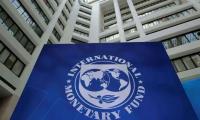HYDERABAD: Hameeda Solangi, a peasant woman from a small village Qasim Solangi near Hoosry town, Hyderabad district, has taken up vertical farming techniques to cultivate a variety of vegetables and it’s coming along luxuriantly.
Solangi seems capable to narrate the modern idea of vertical farming, saying, “It is a sustainable food system and using indoor farming techniques and controlled environment mechanism can help farmers get more yield on a small piece of land”.
She is among 11 women farmers, who have these vertical vegetable gardens in the neighborhood. This vertical farming technique is gathering momentum in many areas, engaging more farmers to adopt it with success.
The enterprising grower is aware of the negative impacts of the overuse of chemical fertilisers, which degrade the soil and hamper overall biodiversity.
She has harvested the first crop of different vegetables and is preparing for the other to have organic food without using any chemical input.
Solangi said the purpose of establishing vertical farming plot near the village was to ensure her family’s food security. “But after starting this farm, I found many customers in the neighburhood to sell these products and earn a little amount to ease my family’s financial problems,” she said.
She still recalls good old days of her producing food crops, mainly wheat, sorghum, pearl mullet, onion, and a variety of seasonal vegetables on a piece of her family land.
The hardworking peasant said there used to be a green zone around famous Hoosry town with mango gardens, banana plantations, and variety of other fruit orchards, but things were not the same anymore. “After ups and downs in irrigation water distribution system, starting from low stream River Indus to canals and watercourses, farmer of that area are facing serious problems,” Solangi said.
Some years back Hoosry town was a major anion market where from this key food item was supplied across the country, earning local growers handsome living.
The community farmers get water from Akram Wah canal, starting from Kotri Barrage. Besides agriculture, the canal benefits livestock and fisheries sectors in Hyderabad, Tando Muhammad Khan, and Badin districts.
Solangi said,” Akram Wah is in fact a perennial canal, but currently they receive water only for summer crops from it, because due to overall water shortage in the river Indus, it gets water less than its designed capacity of 41,00 cusecs”. Thus they cannot cultivate winter crops, like wheat and other crops, she added.
In this situation, she said, the farmer had no other option other than cultivating rice crop to use their family lands for survival, adding, they receive water during the rice cultivation season starting from the months of April, May, and June and continue till the months of July, August and September, depending on the flow of water in the canal. “Only then farmers are able to develop nurseries, prepare lands and cultivate rice crop,” Solangi said.
It is pertinent to note that officially cultivation of paddy on Akram Wah (canal) is prohibited. They face acute shortage of water even for their drinking and livestock during the crucial months of October, November, December, January, February, and March.
During the recent visit of the area it was observed that farmers were upbeat on a stronger paddy yield this year after receiving more water following heavy monsoon season downpours. Apart from this, following the fear and chaos about flood in the river, the authorities concerned have also released more water in canals to benefit farmers to recover losses suffered during drought-like previous years.
Farmers said they spend around Rs35,000-Rs40,000 per acre, including tractor machinery and chemical inputs for rice crop. Compared to this cost, the producers receive a low yield of merely 30 maunds (40kgs) per acre, against the past 10-15 years when they used to receive 80-100 maunds per acre. It is because of increasing salinity in the area. The majority of the inhabitants of village Qasim Solangi depend on agriculture and sharecropping. Only a few families have their own small pieces of land. For example, the village farmers own around 60 acres land out of which they hardly cultivate 25 acres. The remaining salinity-tainted land remains unused for the last many years.
Farzana Solangi, another local farmer, despite being a female member of newly formed watercourse association could not understand how they have lost food crops, fruits, and vegetable products, which were common and accessible to the communities.
Currently they have only paddy crop, which they produce for their own consumption and for market to live sustainably.
Farzana Solangi is one of the active and vocal female members of watercourse associations working with male counterparts to improve water distribution system so the people may get equal share of water without any difficulty.
Another woman farmer Saran Solangi, from village Haji Mahrab Solangi in the same neighbourhood, said her family had four acres of land, which were not cultivable for the last many years due to increasing salinity so she established a vertical vegetable garden.
The role of farmer women in these villages has become critical, especially after becoming members of water bodies at grassroots levels, mainly watercourses association. They are motivated to understand their rights and responsibilities to maintain water governance and ensure equal irrigation water distribution.
Some farmers, seeing no way out, have developed fish ponds on their cultivable lands as an alternative source of income, but after two-three years they are running losses due to unavailability of canal water to feed the pond as it is hard to keep fish alive without sufficient water. These people seem living in an environmentally-fragile ecological zone, where they face floods, droughts, food insecurity and water shortages. Women with socially and economically marginalised backgrounds are the most disadvantaged in terms of access to resources and social influence.
In this picture, the PCJCCI logo can be seen on September 1, 2022. — Facebook/Pakistan China Joint Chamber of...
The logos of the World Bank and IMF. — AFP FileNEW YORK: The United States is the MVP of GDP. That was the...
A security guard sits in front of a wall with signs and slogans at the operation building at the Pakistan Steel Mills ...
A worker cleans the entrance to the headquarters of Bank Indonesia, the nation's central bank, in Jakarta, Indonesia....
The MCB's logo is seen on a wall outside the bank's head office. — MCB websiteKARACHI: MCB Bank Limited on...
Stack of Rs5,000 and Rs1,000 notes. — AFP/FileKARACHI: The rupee lost ground against the dollar in both currency...







